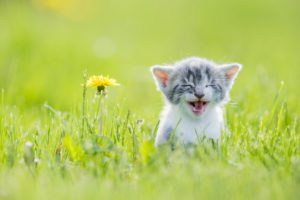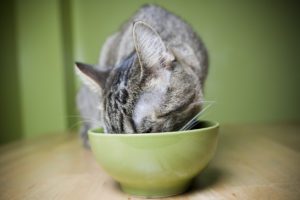Why Do Cats Purr in Portsmouth, NH?
Purring is the most common sound cat make and what owners are used too. Yet we know less about the unique sound than meowing, hissing, and growling. Many cat owners are taught that cat purrs are to show that the cat is happy, although a cat’s meow has more meanings.
While purring is partly instinctive and voluntary for cats, cats can use the purr sound for various reasons, such as using the soft rumble to communicate as a form of healing or self-soothing. This is why cats will purr whenever they are in pain, injured, or are in a stressful situation.
Here is what you need to know about cat purring. This article would inform you how they purr, how you can tell what your cat’s purring means, why they do it, and other facts about cat’s purr.

When Do Cats Start Purring?
Cats begin to purr after a few days of being born. Kittens are born blind until two weeks. When they are blind, they use purring to communicate with their mother to alert them on where they are, and to draw their attention when they are getting hungry or when it’s feeding time. Cats carry this behavior till adulthood and will be familiar to cat parents whenever it’s time for dinner. These are just a few of the ways purrs are used by cats.
How Do Cats Purr?
When a cat purrs, nerve signals are sent to the muscle of the voice box and diaphragm o, which helps expand the chest once breathing. These nerve signals stimulate the vocal cords, so when cat takes in air and exhales, the air in the diaphragm moves across these muscles, resulting in the purring sound of both domestic and wild cats.
Purring has developed throughout the years to help keep cats’ bones and muscle intact at all times. This is extremely useful during long periods of inactivity, like the hunting style when they have to wait awhile before they pounce on prey and ambush it. The cat purr is almost a continuous sound. Cat’s purr when they both inhale and exhale.
Scientist used to believe that cat purring would usually come from the vibration of their hearts, and if you felt your cat purring, you would know why they used that theory. Air vibrates whenever the cat inhales and exhales at approximately 25 to 150 vibrates per seconds.
Why Do Cats Purr?
Cats purr for different situations which cause multiple theories on the sound they make. Here are different reasons cats purr.
Your Cat Is Happy
Cat’s owners are used to hearing their cat purr whenever their cat is content and happy. It’s like how a dog wiggles its tail and jumps, all excited.
Your cat is sitting on your lap and getting pets and scratches. They are probably purring to inform you they love what they are receiving, a nonverbal way to communicate with their owners without using words but sounds. If your cat is receiving love and it purrs, you don’t need to worry, just keep showing your cat love.
Humans laugh and dogs wag their tails when happy, cats produce a low rasping vibration sound that is often heard when they’re being pet or scratched. Cats can purr to other cats or even other pets like dogs.
Your Cat Wants Food or Something Else
Sometimes cat purr whenever they are hungry or want something. Researchers have differentiated the purrs of content versus hunger. The purr sounds like their pleasant purr and a whining purr, like a child whining or crying. Cat owners are more likely to respond to the sound.

For Healing Mechanism
Although purring takes so much energy, cats use this sound as a form of self-meditation or relief from pain and recovery whenever they are hurt. It’s simply a way for cats to soothe themselves, similar to a child that sucks their thumb to feel better or a man humming or talking to himself.
According to studies, purring is done at a low frequency that helps to stimulate the injured area to make it feel better, most of the tendons and bones. The frequencies of the purrs cause vibrations within their body, which can:
- Reduce pain and swelling
- Ease breathing
- Repair tissues, tendons and build muscles.
- Heal bones and wounds.
This might explain how cats are able to survive falls and the theory of cats having nine lives. They also tend to have less complications after a surgery than other pets.
Recent Posts
About Us
We're proud to have many long-time staff members at our hospital who get along like family and treat their patients and clients the same. The compassion and commitment of our veterinarians and staff make our team a reliable, trusted partner for you and your pet.

